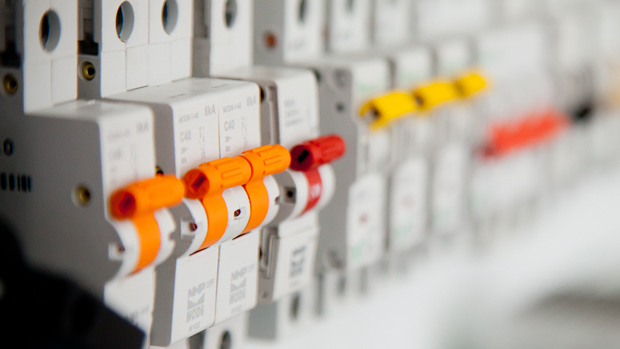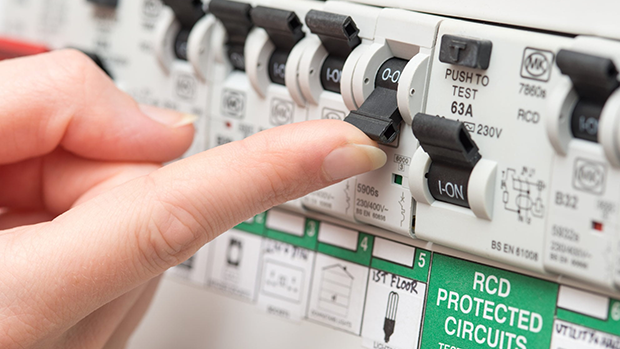All new houses are built with safety switches, but many older homes still require safety switch installation to bring them up to current electrical safety standards. While it may not seem like a big deal to have an older power board that still uses fuses, there are many reasons why having safety switches installed is a good idea.
This is particularly true when you’ve got young children living in a house, who are more prone to play around with power outlets and who have no understanding of the dangers of electricity.

The dangers of electricity
Electricity certainly isn’t something you want to play around with. There are many ways electricity can cause danger to yourself or loved ones.
Shock and burns: A result of coming into contact with live parts.
Fires and explosions: A result of faults or a flammable atmosphere igniting.
Cardiac arrest: A result of a strong current going through the human body.

What is a safety switch?
You may have heard the term safety switch before, but are you familiar with what it is?
A safety switch, or residual current device (RCD), is designed to monitor the flow of electricity through a circuit, and when there’s a surge, they’ll immediately shut it down. This prevents electric shock, harm and possibly even death. The power can be switched off in an impressive 0.3 seconds.
The calculations
Every 30 milliseconds your safety switch does a simple calculation as per the below:
QUESTION: How much electricity is going in?
ANSWER: 10 amps
QUESTION: How much electricity is coming out?
ANSWER: 10 amps
QUESTION: Are these amounts equal?
ANSWER: Yes
RESULT: Do nothing
Safety switch vs. a circuit breaker
Often, there is some confusion between a safety switch and a circuit breaker. In layman’s terms, whilst a safety switch protects you from electrocution, a circuit breaker does not. They look almost the same, but the safety switch has a “test” button on it. A circuit breaker will protect your circuit from being overloaded.
Some Homes May Not Have Safety Switches
Safety switch installations are incredibly important and are not too expensive. Given their long history of safe and effective use, they’re not the sort of thing that you want to mess around with. Most houses you buy in Australia will have had safety switches installed already (even older homes), but it is always wise to check to make sure! There is always the chance that an older house won’t have up to date wiring or safety switches, especially if it was owned by an elderly couple who have been in the house for many years.
Check Any Rental Property You Move Into
If you move into a home and there are not safety switches already installed, speak to your agent or landlord about getting one installed.
In Queensland and Western Australia, having safety switches installed are mandatory by law, however, in New South Wales they are not.
A briefing paper published on the Tenants NSW website states:
Dwellings built before 2000 are not required to have RCDs on their light circuits, and dwellings built before 1991 are not required to have RCDs on any of their circuits.
Testing a safety switch
Ideally, every 6 months it is best to perform a test on your safety switch. The process is quite simple.
- Locate your safety switch in your electrical box.
- Press the “test” or “T” button.
- The switch should trip to “off”.
- Turn your switch back to “on”.
If the switch does not trip to “off” immediately, turn off the power and call your local electrician.
Has your safety switch tripped?
If you’re safety switch has tripped, there could be a few reasons for this.
- A home with faulty wiring – Your house may be tripping unnecessarily due to an older style of wiring. Particularly common in older homes. You may need to have your home rewired with a more modern style of wiring.
- Faulty appliances – It may be that your appliance has reached its ‘use by date’ and no longers works properly. To test this, unplug each appliance in your home. Next, turn your safety switch back on and begin to turn your appliances back on, one at a time. When the safety switch trips again, you’ll know this is your problem appliance!
- Insects – Believe it or not, insects can cause your safety switches to trip. This is because they may have created a nest inside your powerpoints.
- Water – Having a washing machine or other appliance that might be leaking can also cause a safety switch to trip.
If you are unsure what is causing your safety switch to trip, it is best to call your licensed electrician to come out and take a look.

Multiple safety switches
You might be thinking a safety switch could become a nuisance if it is going to black the whole house out if one appliance faults. It is important to remember nothing is more important than you and your families health and safety. A way around this is to have multiple safety switches installed. One for the power points, one for appliances such as microwaves and dishwashers, as well as having one for the lighting.
Ideally, you should have a safety switch for each circuit in your household.
The statistics
The Australian Institute of Health and Welfare tells us between 1st July 2014 and 30th June 2016:
- 1,065 individuals were hospitalised due to an electrical injury.
- 487 of these people were 25-44 years of age.
- 46% were male and 44% were female.
- Exposure to electric current was the cause for 73% of these injuries. (This includes switches and cords or electric current from domestic appliances and machinery.
Safety Switches Should Not Be An Optional Extra
Safety switch installation isn’t really an optional extra anymore, it’s something that should be done in all properties that haven’t yet been upgraded. If your home doesn’t have safety switches, call an electrician as soon as possible and arrange to have them installed. This is one of the surest ways of protecting you and your family against electrical injuries.


